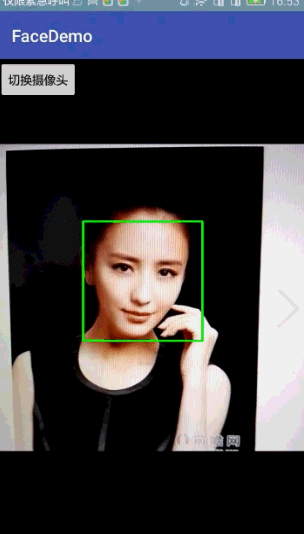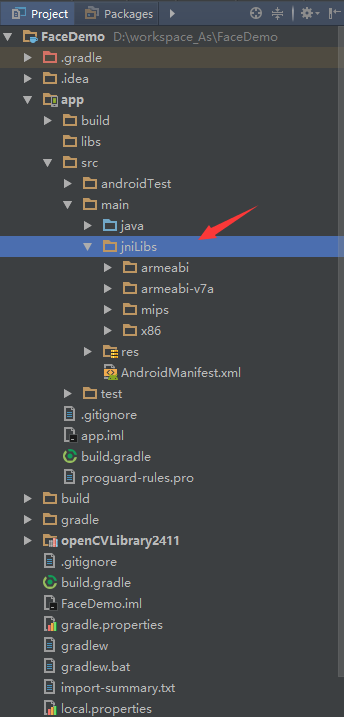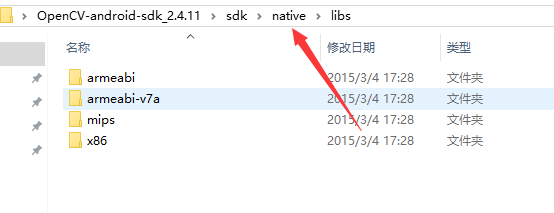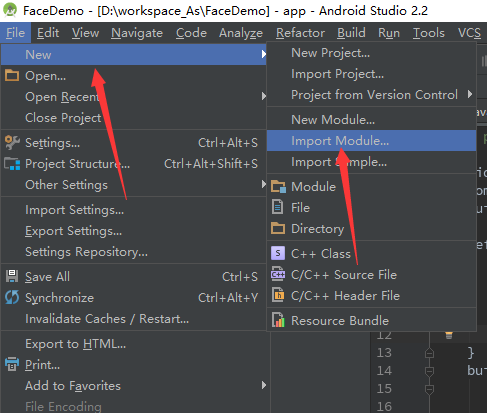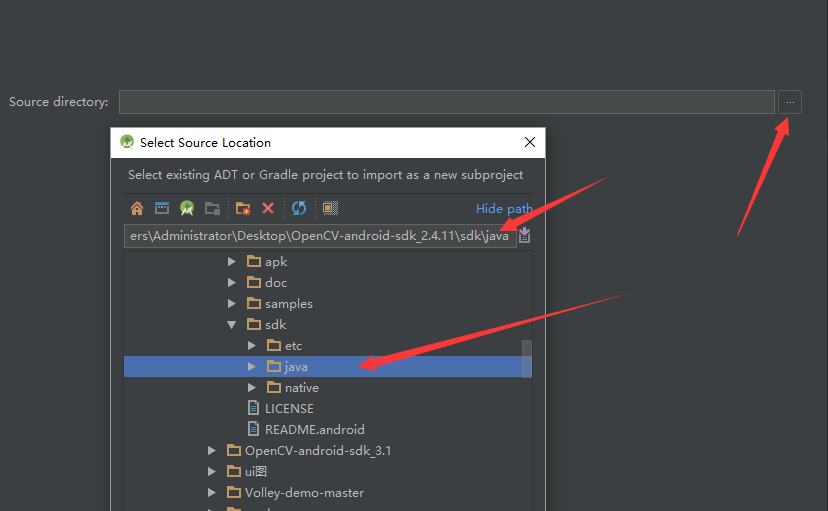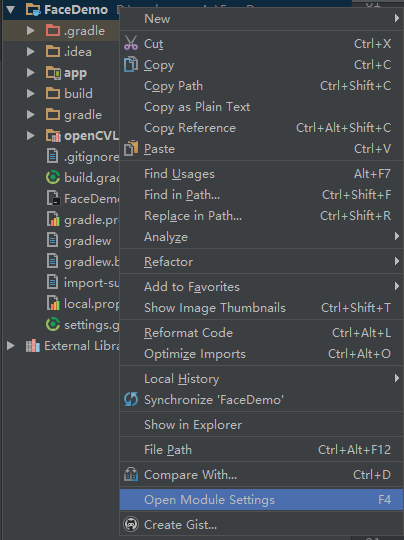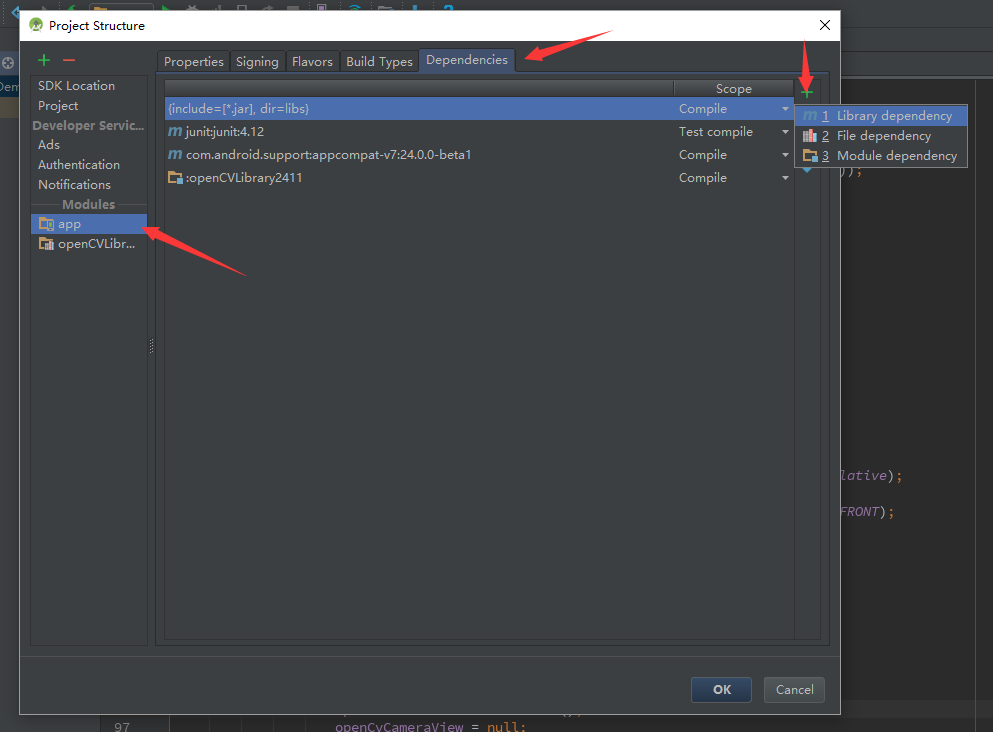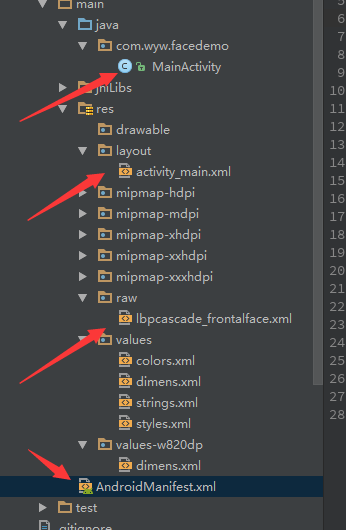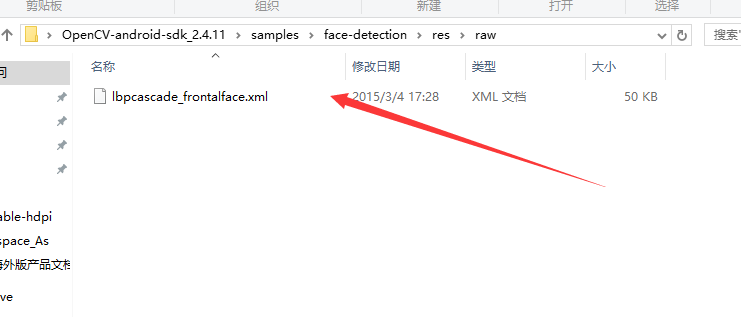android OpenCV研究之動態人臉識別
阿新 • • 發佈:2018-12-11
轉載自:https://blog.csdn.net/u013895206/article/details/52671550
隨著直播漸漸的火起來,像抱著直播大腿的其他功能也漸漸的火起來了,比如說人臉識別。說起人臉識別用處甚廣,比如說有以這個功能為核心的app:美顏相機、美圖秀秀、SNOW等等,但是美顏相機和美圖秀秀是用的國內SDK《Face++》來做的,這個sdk呢好像是他們自己的後臺進行識別並不是app本身做識別。這樣就跟我們今天要了解的動態識別不是很對路,肯定不能拿到攝像頭的一幀畫面去調一次介面再接回引數吧,這樣效能肯定不行。所以今天就拿SNOW的例子來說,雖然我不知道他是用什麼做的,但是我們可以用openCV也能實現。
我們先看看效果圖:
實現步驟如下:
1、首先我們需要去openCV的官網下載sdk,這個是地址:http://opencv.org/downloads.html
2、然後新建個專案我這裡以studio裡為基準,在main目錄裡面新建jniLibs資料夾,為什麼叫jniLibs呢,因為這是呼叫c庫的預設資料夾命名,當然你也可以命名其他的,但是需要在build裡面指定這個資料夾。好了,開啟我們剛才下載的檔案,然後一次開啟sdk\native\libs,最後把libs目錄裡面的所有資料夾拷貝到jniLibs裡面去。請看圖:
3、加好jniLibs之後呢還需要匯入一個module,在studio裡面點選file->new->import module->匯入module目錄是剛才下載的sdk\java這個目錄。請看圖:
4、匯入之後呢右鍵專案開啟open module setting選項,在app選項裡點選Dependencies這個,然後點選最右邊的+號把剛剛匯入的module加進去。請看圖:
5、現在開始寫程式碼了,這裡我把需要寫的程式碼檔案會一一貼出來,下面請看圖:
首先是MainActivity的程式碼:
package com.wyw.facedemo;
import android.content.Context;
import android.os.Bundle;
import android.support.v7.app.AppCompatActivity;
import - 1
- 2
- 3
- 4
- 5
- 6
- 7
- 8
- 9
- 10
- 11
- 12
- 13
- 14
- 15
- 16
- 17
- 18
- 19
- 20
- 21
- 22
- 23
- 24
- 25
- 26
- 27
- 28
- 29
- 30
- 31
- 32
- 33
- 34
- 35
- 36
- 37
- 38
- 39
- 40
- 41
- 42
- 43
- 44
- 45
- 46
- 47
- 48
- 49
- 50
- 51
- 52
- 53
- 54
- 55
- 56
- 57
- 58
- 59
- 60
- 61
- 62
- 63
- 64
- 65
- 66
- 67
- 68
- 69
- 70
- 71
- 72
- 73
- 74
- 75
- 76
- 77
- 78
- 79
- 80
- 81
- 82
- 83
- 84
- 85
- 86
- 87
- 88
- 89
- 90
- 91
- 92
- 93
- 94
- 95
- 96
- 97
- 98
- 99
- 100
- 101
- 102
- 103
- 104
- 105
- 106
- 107
- 108
- 109
- 110
- 111
- 112
- 113
- 114
- 115
- 116
- 117
- 118
- 119
- 120
- 121
- 122
- 123
- 124
- 125
- 126
- 127
- 128
- 129
- 130
- 131
- 132
- 133
- 134
- 135
- 136
- 137
- 138
- 139
- 140
- 141
- 142
- 143
- 144
- 145
- 146
- 147
- 148
- 149
- 150
- 151
- 152
- 153
- 154
- 155
- 156
- 157
- 158
- 159
- 160
- 161
- 162
- 163
- 164
- 165
- 166
- 167
- 168
- 169
- 170
- 171
- 172
- 173
- 174
- 175
- 176
- 177
- 178
- 179
- 180
- 181
- 182
- 183
- 184
- 185
- 186
- 187
- 188
- 189
- 190
- 191
- 192
- 193
- 194
- 195
- 196
- 197
- 198
- 199
- 200
- 201
- 202
- 203
- 204
然後是layout的xml程式碼:
<?xml version="1.0" encoding="utf-8"?>
<RelativeLayout
xmlns:android="http://schemas.android.com/apk/res/android"
android:id="@+id/relative"
android:layout_width="match_parent"
android:layout_height="match_parent">
</RelativeLayout>
- 1
- 2
- 3
- 4
- 5
- 6
- 7
- 8
- 9
現在是raw資料夾裡面的xml(這個xml是圖片解析出來進行對比校驗人臉的模型庫)由於這個檔案有一千多行就不貼了,如有需要請去下載本demo檢視!當然也可以去你下載的openCV的sdk裡面拿,目錄是\samples\face-detection\res\raw。請看圖:
最後就是AndroidManifest檔案了:
<?xml version="1.0" encoding="utf-8"?>
<manifest package="com.wyw.facedemo"
xmlns:android="http://schemas.android.com/apk/res/android">
<uses-permission android:name="android.permission.CAMERA"/>
<uses-feature android:name="android.hardware.camera" android:required="false"/>
<uses-feature android:name="android.hardware.camera.autofocus" android:required="false"/>
<uses-feature android:name="android.hardware.camera.front" android:required="false"/>
<uses-feature android:name="android.hardware.camera.front.autofocus" android:required="false"/>
<application
android:allowBackup="true"
android:icon="@mipmap/ic_launcher"
android:label="@string/app_name"
android:supportsRtl="true"
android:theme="@style/AppTheme">
<activity android:name=".MainActivity">
<intent-filter>
<action android:name="android.intent.action.MAIN"/>
<category android:name="android.intent.category.LAUNCHER"/>
</intent-filter>
</activity>
</application>
</manifest>
- 1
- 2
- 3
- 4
- 5
- 6
- 7
- 8
- 9
- 10
- 11
- 12
- 13
- 14
- 15
- 16
- 17
- 18
- 19
- 20
- 21
- 22
- 23
- 24
- 25
- 26
- 27
- 28

